" "People just like 500s. We drove down to Italy for the 500's anniversary _ everyone was smiling and waving" What is it that makes Italian cars so special? Liz Seabrook asked the question at the Italian Car Picnic at Honnington Gardens. ["

Six decades of Fiat 500
The Fiat 500 – Forever Young at 60
The most famous miniature motor in the automotive arena has turned 60 this summer – and no, it’s not the Mini. The Fiat 500 is what we’re talking about here, and for your information, yes, it’s older than the Mini by two years.
The Fiat 500, or the Cinquecento as the Italians call it, was born in 1957 and the tag that Fiat is using for its 60th birthday is ‘Forever Young’. Well, there’s no denying that; the car is as trendy and popular now as it ever was, thanks, in part, to a reinvention of the 500 in 2007 to mark its 50th anniversary.
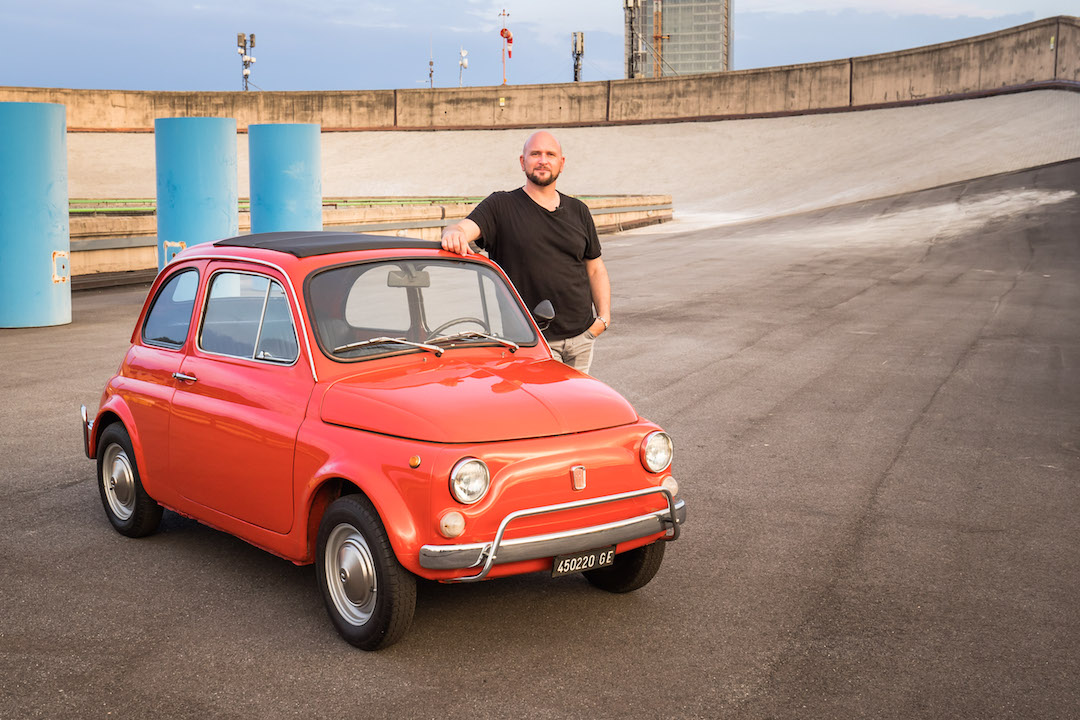
Is it really possible that the Fiat 500, dreamed up by designer Dante Giacosa, is 60 years old? Yes, it is, folks. The initial motor was produced in Turin on 4 July 1957, with assembly lasting until 1975. In those two decades, nearly four million 500s were shifted, and Fiat reckons that 400,000 of these original cars are still on roads throughout the world today.
The petite and original two door Fiat 500 had modest performance: a maximum speed of only 53 mph. It had an air-cooled two-cylinder 479cc posterior-mounted power unit propelling the rear wheels, with just 13 horses biting at the bit under the engine cover.

We all know that performance hinges on power to weight ratio, so measuring a mere 2.75m long and weighing in at just 499kg, the miniscule machine could get away with its puny engine. In fact, the engine was so pintsized that some of today’s ride-on lawnmowers could probably trounce it.
Of course, clout wasn’t the point of the baby Fiat – style and size was. The fact it was small enough to drive through narrow Italian village streets and simple to park in busy Italian cities, was also a major reason for its conception. Furthermore, the 500 came hot on the heels of the trendy scooters of the 50s. Lambrettas and Vespas were selling like hotcakes, but the Fiat could offer even more – a buzzing little driving experience – with a roof. And, even though it was extraordinarily compact, the car could sit four-up. Mind you, with a quartet of adults in the 500, walking might have been quicker – especially going uphill!
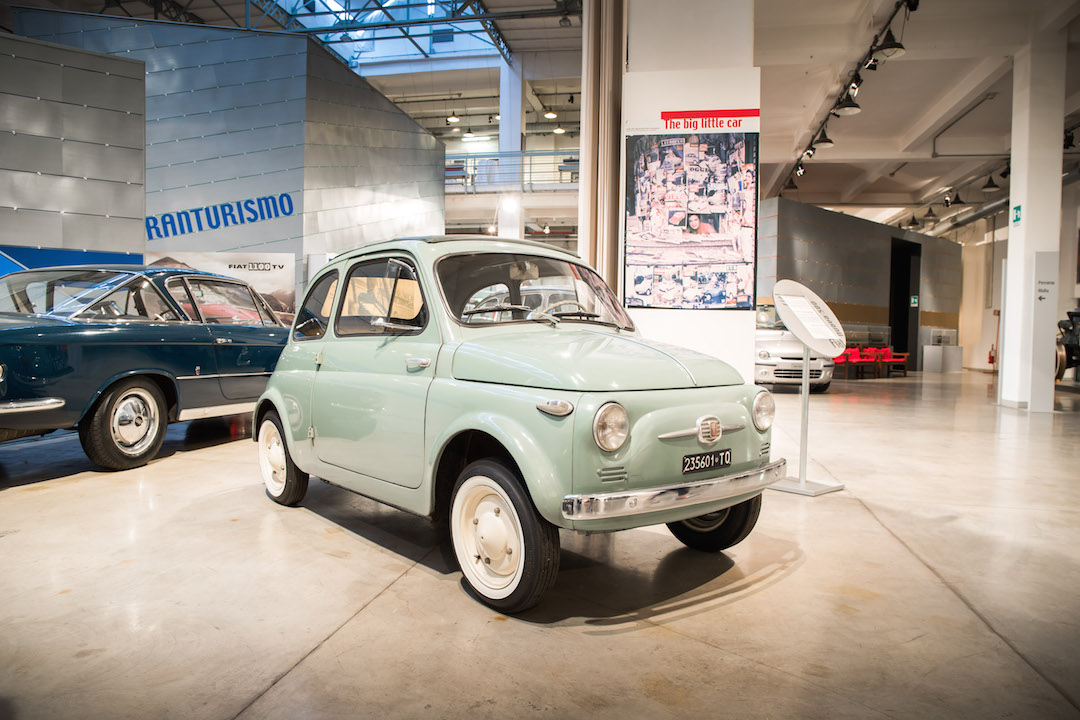
The Fiat 500 was manufactured at the Lingotto plant in the heart of Turin, famous for its rooftop track, accessed by means of a corkscrew-like roadway spiralling up one end of the factory. The sharply-banked test-track is notable for the renowned car-chase spectacle in the 1969 movie ‘The Italian Job’, starring Michael Caine.
So, where better to celebrate the Fiat 500’s six decades than on top of the Lingotto? We were fortunate enough to be invited to this special occasion, where Fiat 500s across the ages were aligned next to a massive birthday cake. After raising a toast to the little car with some non-alcoholic fizz, we were allowed to drive classic diminutive Fiats on the legendary circuit, now maintained as one of Italy’s state monuments. One of the best memories of the evening was driving a 1971 Fiat 500. It was the closest thing to being in a time machine – especially knowing we were motoring where film crews had been 48 years earlier for the motion picture that sealed Michael Caine’s fame.

Fast-forward six-decades and the Fiat 500, as we know it nowadays, has a comparable profile to its well-known forebear. However, it’s a very different vehicle now. At four metres long, it has almost doubled in length, and the powerplant is now shoehorned under a bonnet at the front.
The modern-day 500 also has more poke. But you’d expect that, wouldn’t you? There are a variety of engines, starting off with a 900cc three-cylinder unit, to a 1.4 litre petrol four-cylinder lump. You can also get the car in diesel guise if you go for the 1.3 litre MultiJet oil-burner. Even the meekest model has 59 horses under its lid – quadruple that of its forefather, and a maximum speed of approximately 100 mph, which is getting on for double the pace of last century’s Fiat 500.
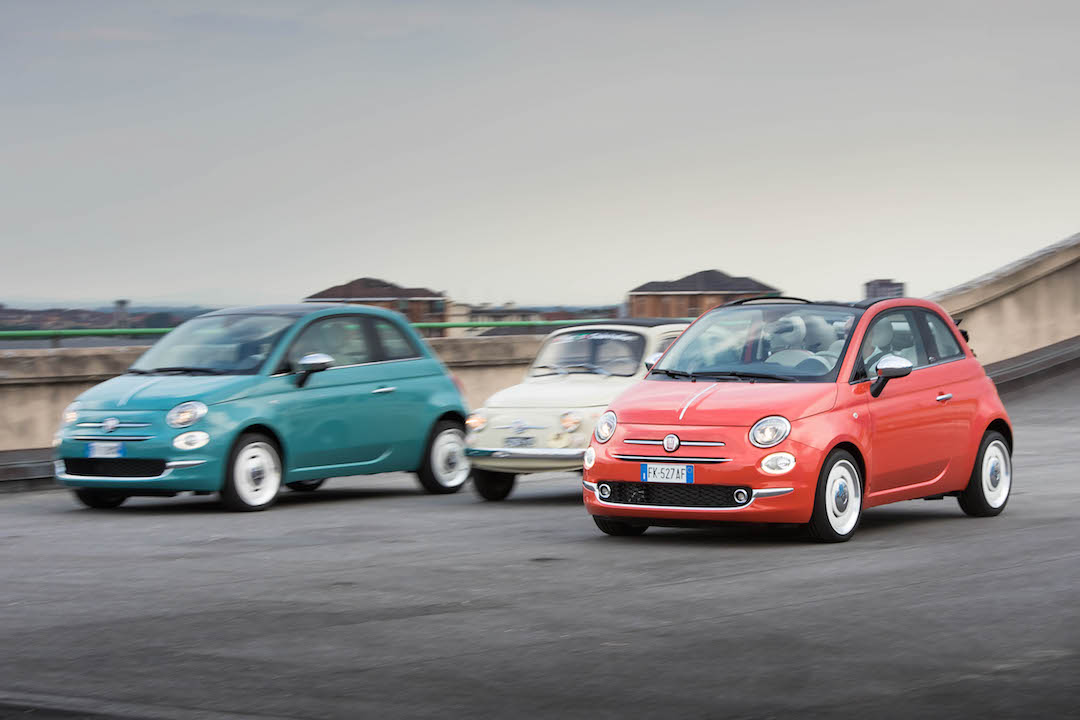
Although the 500 is still considered a pure Italian auto, the present-day model isn’t made in the land of pizza and pasta. Instead it’s constructed in a place more known for Chopin. Yes, folks, composer, Frederic Chopin, was Polish – so, I guess you could say the Fiat 500 is now, too. Well, sort of. It’s North American, as well, because a factory in Mexico also makes it. The good news for Fiat is that all this means the current Fiat 500 is exported to 100 countries. Popular as ever then? Oh, yes, we’d say so!
The Fiat 500 has also hatched a whole new bloodline of related models: the delightful rag-top 500 Cabriolet, the somewhat bloated 500L, and the mud-plugger-esque 500X crossover. But, vitally for 2017, Fiat has just ushered in a Fiat 500 anniversary edition, named Anniversaire. This is in honour of the model’s 60 years on the planet. The anniversary edition is in Britain now, and there are just 250 of them.
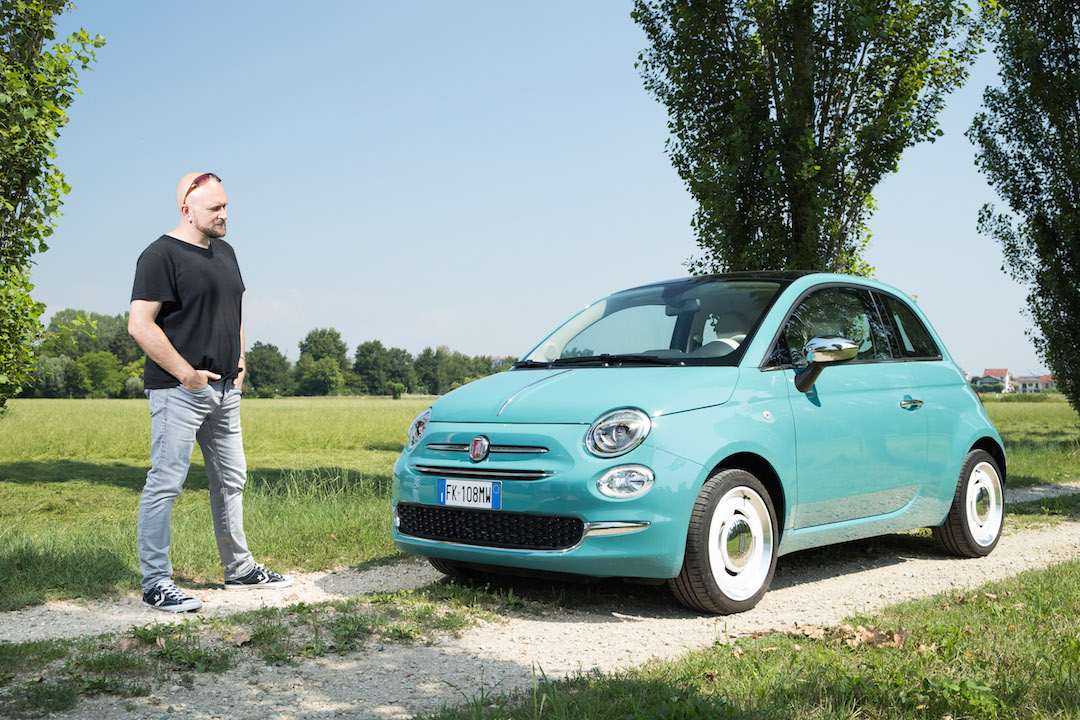
In a further move to show how much the Fiat 500 means, Italy has also brought in a collector’s postage stamp. It has been commissioned with the legendary 500 in the starring role. The stamp, made in a run of 1,000,000 units and available in Italy only, commemorates the car that made automotive history. With a worth of 0.95 Euro, it features the distinctive form of the traditional Fiat 500 overlaid on that of the now equally well-known existing 500. The blue backdrop comes with Italian flag stripes either side of the words ‘Fiat Nuova 500’, created in the identical font as the ad posters from 1957. It is a real objet d’art.
Indeed, the Fiat 500 is a phenomenon of car design and a vehicle that has enhanced the lives of masses of people. It helped the Italian economic recover; it put Italians on four wheels and then it was shipped world-wide, so much so that currently, 80 per cent of Fiat 500s are retailed outside of Italy.
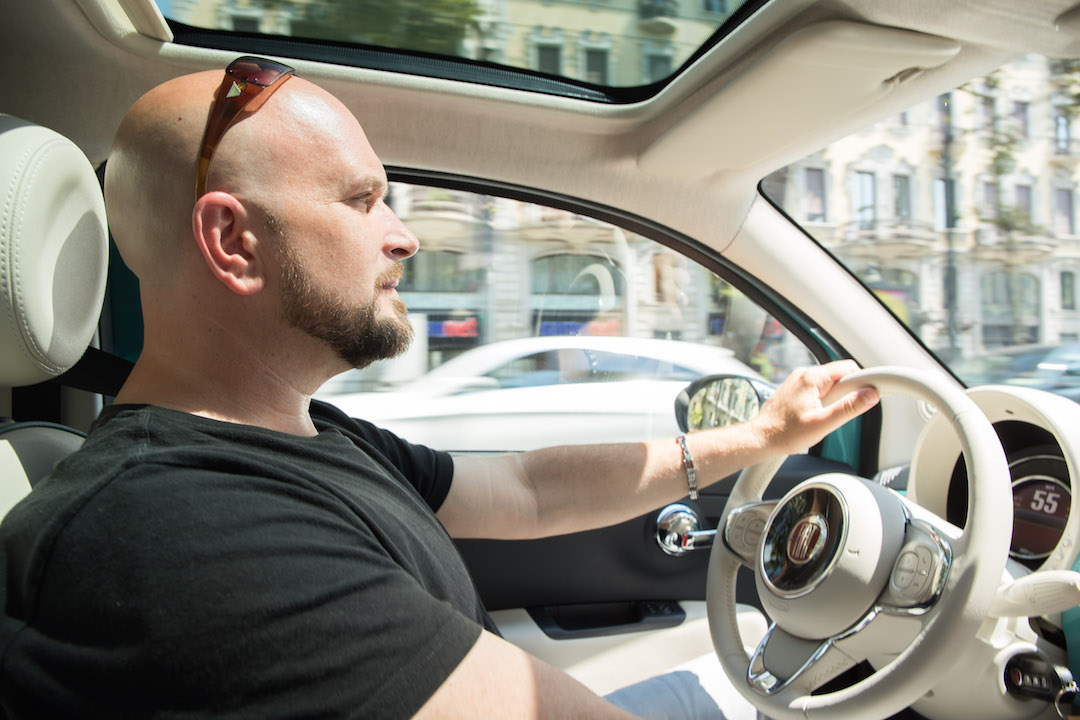
What we’re saying is that in the six decades since assembly started, the 500 has become an authentic icon, due to its pioneering shape, functionality and engineering. With a compelling character, the Fiat 500 has been an example of cool car design for years, inspiring and moulding the looks of many modern motors.
Fiat certainly has a valuable heritage, thanks to the success of the 500 – and many automakers can’t equal that.
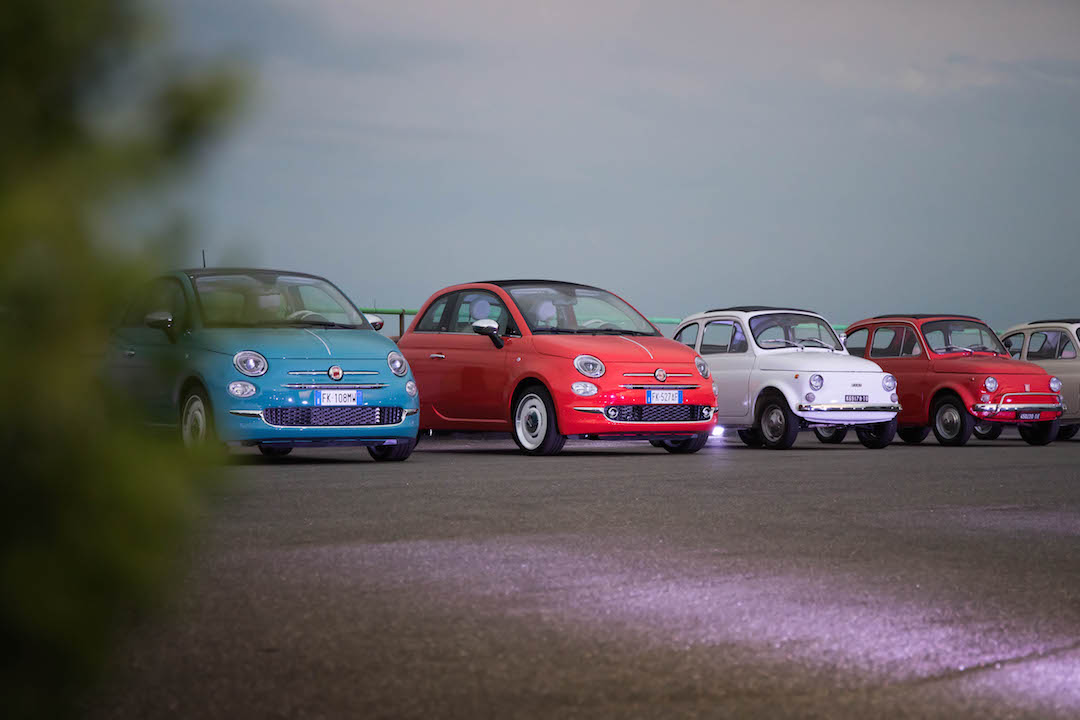
CLICK TO ENLARGE










